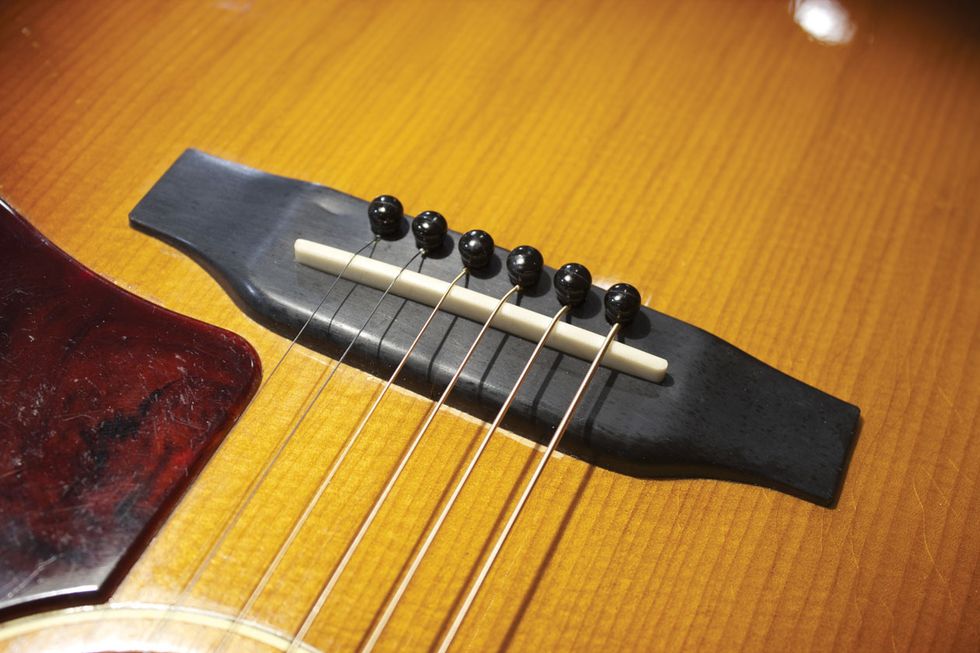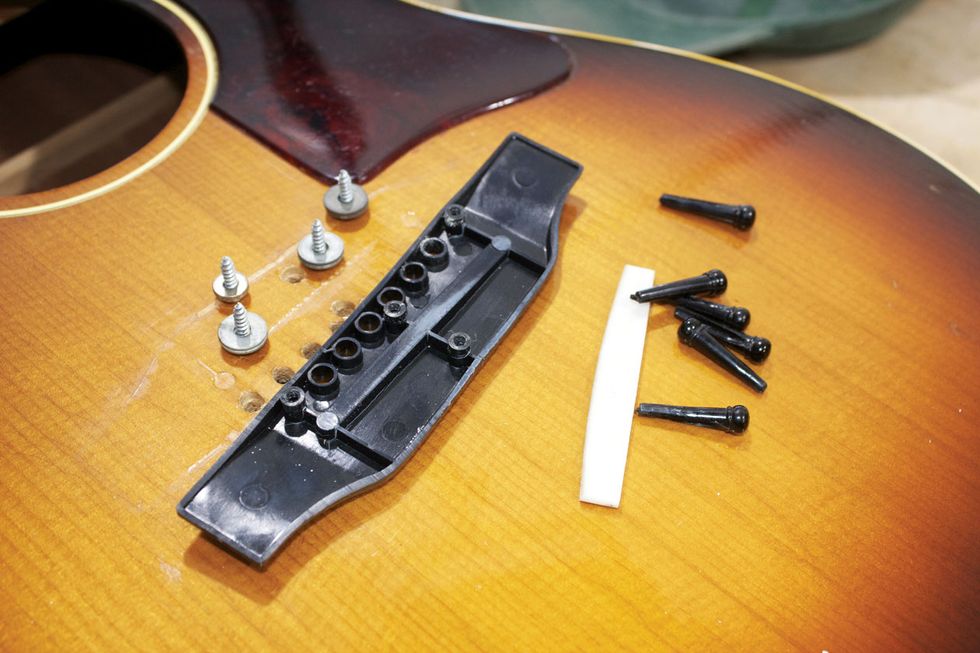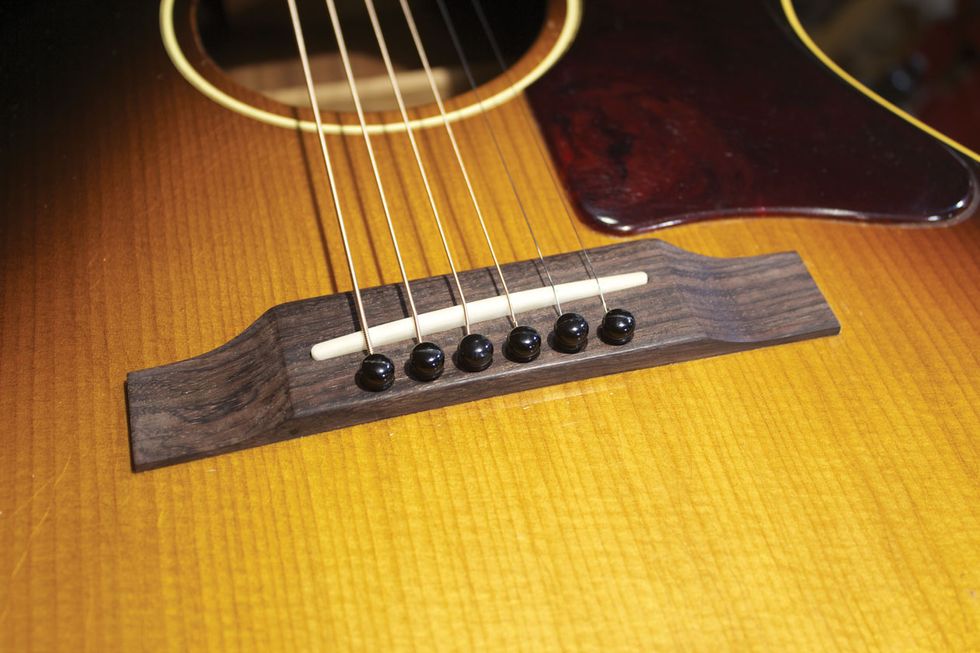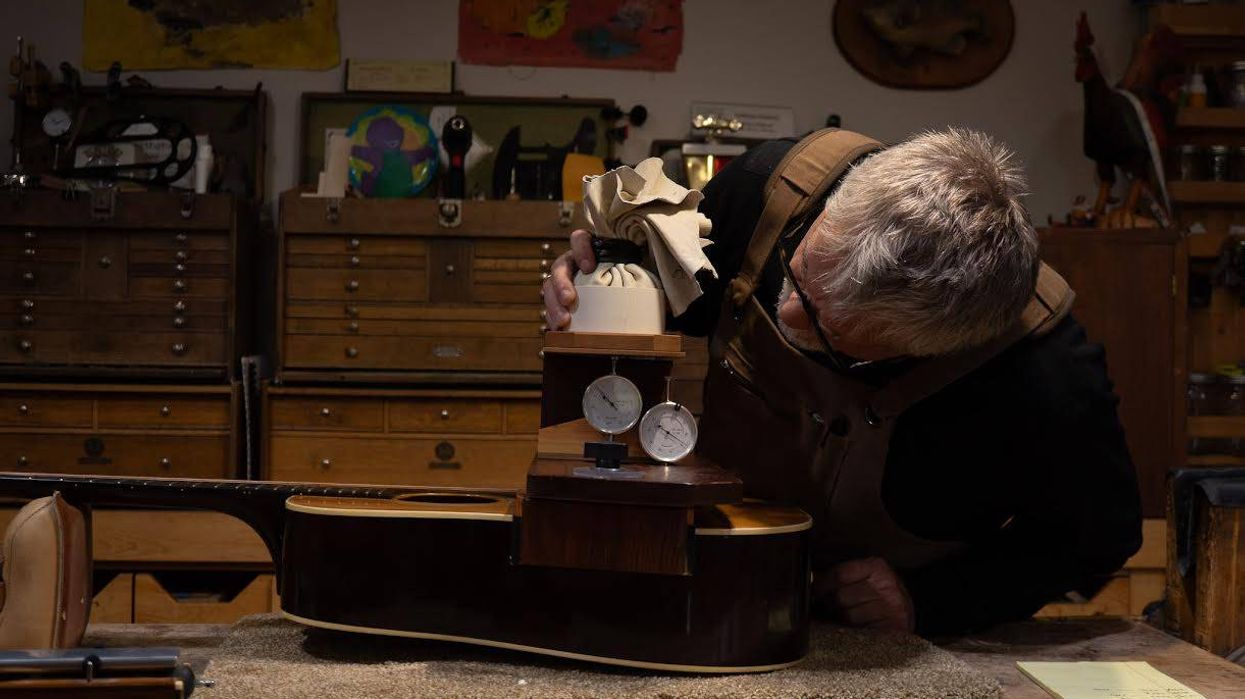The transmission of kinetic energy from the string through the saddle, and then from the hardwood bridge to the soundboard, is the most important action on an acoustic guitar. For the style of sound a particular instrument is going to make, the balance of the materials used for the saddle and bridge are key for tonal development.
For nuts and saddles, bone remains king. As for bridges, hardwoods such as ebony and rosewood are prime choices and used throughout the industry. Back in the early ’60s, however, Gibson made the decision to use plastic injection-molded bridges on their acoustic guitars. I’m going to go out on a limb here: These bridges were a terrible idea and didn’t have a single redeeming quality. Gibson is a pioneering company and has given us countless innovations, but they did not knock it out of the park with that one.
These bridges were produced in both set-saddle and adjustable-saddle versions. They first appeared on less expensive guitars, but somehow made their way to higher-end models as well. These plastic bridges were secured to the soundboard with four wood-screw-style fasteners, and aside from the fact they just flat-out sounded terrible, they also had all kinds of issues that continually plagued a guitar’s performance.
Plastic bridges, like the one on this mid-’60s Gibson LG-0 (Photo 1), are pretty easy to spot. They are all black—because you can’t make injection-mold plastic look like rosewood—and often have a white chalky film that covers the entire bridge, which is a dead giveaway. They also lack definition, unlike wooden bridges that generally have nice sharp lines.
Photo 2
In any case, replacing these plastic bridges with a solid-wood replica is the correct call, and it will vastly improve the instrument’s ability to perform correctly. If you’ve been following my columns, you know that I’m not an advocate for altering or changing parts on guitars, but changing out these plastic bridges is a no-brainer and win-win across the board.
To remove the bridge, simply reach inside through the soundhole and loosen the screws. Once unscrewed and removed (Photo 2), you will be able to see just how bad the bridge situation is for the tone of the instrument. Its hollow design and the fact there is finish on the soundboard area under the bridge creates an extremely low level of kinetic energy transmission.
Making a replacement bridge is a task that most skilled repairpersons can pull off, although making the adjustable saddle version of this bridge can be a bit trickier. If you check around, some CNC shops have programmed dead-hit replicas of these bridges in both the set-saddle and adjustable-saddle versions. Tom Dalia here in our CNC department makes these bridges for us and other shops around the country. Our replacement bridges have four built-in locating pins on the underside that line up with where the screws used to connect—ideal for accurately locating the bridge during the gluing process.
Photo 3
To ensure a proper gluing surface, the finish under the bridge will need to be removed. This will allow you to secure the bridge properly using quality woodworking glues, such as aliphatic resin or hide glue, for its ability to transmit kinetic energy through the glue joint. Once the process is complete, the guitar will create better high end, sustain, and response. Plus, if the repair is performed correctly (Photo 3), the guitar will have a vintage appearance that will retain its historical integrity—a positive net gain all the way around.
This particular guitar had a set saddle, so the decision to replace it with a set-saddle replica was already made for us. In the case of a Gibson with an adjustable-saddle version, some technicians may choose to replace it with a set-saddle bridge. However, you really need to make sure it was offered that way from the factory before making any irreversible alterations. If you don’t, you could be changing the originality of the instrument, and that’s never a great idea.





















